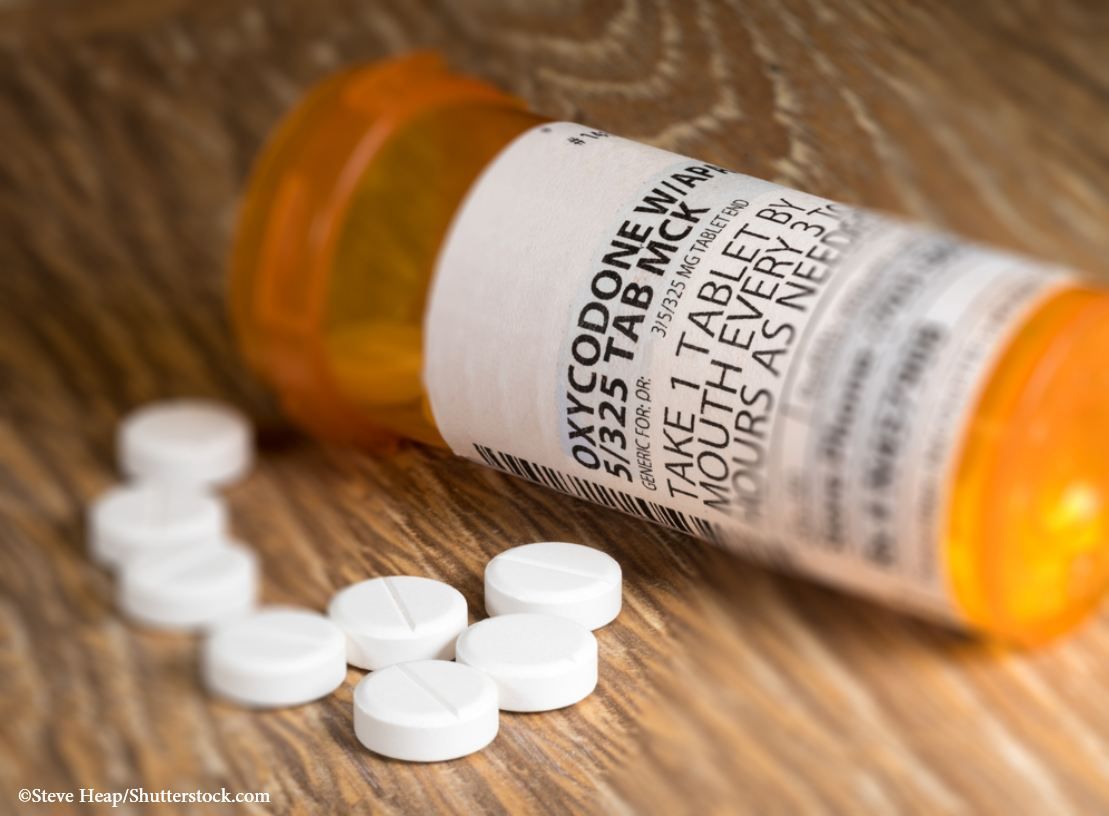5 Patient Factors that Predict Persistent Opioid Use after Benign Hysterectomy: Meta-analysis
Total perioperative dosage of opioids was higher for abdominal vs laparoscopic hysterectomy, but procedure route was not associated with risk for long-term opioid use.
Among women undergoing benign hysterectomy, the quantity of perioperative opioid dispensing was significantly dependent on the route of the procedure, according to new research, with the lowest morphine milligram equivalents (MME) prescribed for vaginal procedures and the highest for abdominal surgery.
©Steve Heap/Shutterstock.com

The type of procedure, however, was not an accurate predictor of persistent postoperative opioid use, according to investigators, who reported that factors including younger age, smoking, alcohol use, and pain conditions were significantly associated with continued opioid use from 3 months to 3 years after the original procedure.
The study was published in the American Journal of Obstetrics and Gynecology
Long-term use of opioids within a year of a first prescription is seen in about 15% of patients, Mostafa Borahay, MD, PhD, MBA, associate professor, director, division of general gyn/ob, director, minimally invasive gynecologic surgery, Johns Hopkins Medicine, in Baltimore, MD, and colleagues wrote. First opioid prescriptions are often dispensed in a surgical center following a procedure, the authors added. Hysterectomy is the second most common surgical procedure among women—and an opioid prescription is provided to approximately 82% of women after the surgery, according to the researchers.
Hysterectomy is the second most common surgical procedure among women—and an opioid prescription is provided to approximately 82% of women after the surgery.
There are data on the risk of continued opioid use following hysterectomy but findings on the prevalence and patient risk factors for persistent postoperative use in this population are inconsistent, according to Borahay and colleagues. The objective of their systematic literature review and meta-analysis was 2-pronged: to assess patterns of perioperative opioid dispensing for benign hysterectomy by procedure and to identify predictors of persistent use post-procedure.
The literature review encompassed Embase, PubMed, and Web of Science with studies from inception to March 25, 2022, eligible for inclusion. Studies eligible for final analysis were required to be observational in design and to report on opioid dispensing for patients receiving hysterectomy, excluding hysterectomy for malignancy.
The study’s primary outcome measure was perioperative opioid dosage, reported as MME, with the perioperative period defined as from 30 preoperative days to 21 postoperative days. For the secondary outcome, researchers assessed risk factors linked to persistent opioid use in the postoperative period, defined as from 3 months to 3 years following surgery.
The final analysis included 8 studies comprising data on 377 569 women; half the studies were retrospective and half prospective designs and all were published between 2017 and 2022. According to the published findings, 3 studies contained data on persistent opioid use and 5 on perioperative opioid dispensing. Overall risk of bias was low, with 5 studies having low risk and 3 having moderate risk.
FINDINGS
Investigators found that perioperative opioids were dispensed to 83% of participants, with an average 143.5 MME dispensed per person (equivalent to 19 5-mg oxycodone tablets).
Borahay et al observed significant variability by procedure route in the amount of opioid dispensed. The average MME for abdominal hysterectomy was 157; for laparoscopic procedures, the average was 127.5 MME; and for vaginal hysterectomy, the average amount dispensed was 87.6 MME.
When they compared MME dispensed between routes of hysterectomy, the investigators found significantly lower amounts dispensed for vaginal vs laparoscopic procedures (mean difference [MD], −47.4; 95% CI, −66.2 to −28.6) and abdominal procedures (MD, −74.5; 95% CI, −99.1 to −49.8). Dispensed MME also was significantly lower for laparoscopic hysterectomy than for abdominal hysterectomy (MD, −27.1; 95% CI, −46.3 to −7.8)
Predictors of persistence. Overall, Borahay and colleagues assessed the incidence of persistent opioid use following hysterectomy to be 5% (95% CI, 2–8). The specific route of procedure, however, did not significantly predict persistent use. Rather, factors significantly associated with increased odds of opioid use from 3 months to 3 years following surgery were:
- patient age <45 years (OR, 1.38; 95% CI, 1.17–1.63)
- smoking history (OR, 1.87; 95% CI, 1.67–2.10)
- alcohol use (OR, 3.16; 95% CI, 2.34–4.27)
- fibromyalgia (OR, 1.60; 95% CI, 1.39–1.83)
- back pain (OR, 1.50; 95% CI, 1.10–2.05; P=.01)
(P<.001 for all except back pain)
“Based on our findings, opioids should be carefully prescribed for all patients, but especially younger patients with chronic pain syndromes and a history of smoking or alcohol use,” the investigators wrote in conclusion. To help optimize short- and long-term outcomes, they also suggest drawing on recommendations from gynecologic oncologic societies “who advocate for setting patients’ expectations for postoperative pain, educating them on the drastic consequences of opioid misuse, and screening them for risk factors of long-term postoperative use, including past opioid use. “
Reference. Hessami K, Welch J, Frost A. Perioperative opioid dispensing and persistent use after benign hysterectomy: a systematic review and meta-analysis. Am J Obstet Gynecol. 2023;229(1):23-32.e3. doi:10.1016/j.ajog.2022.12.015